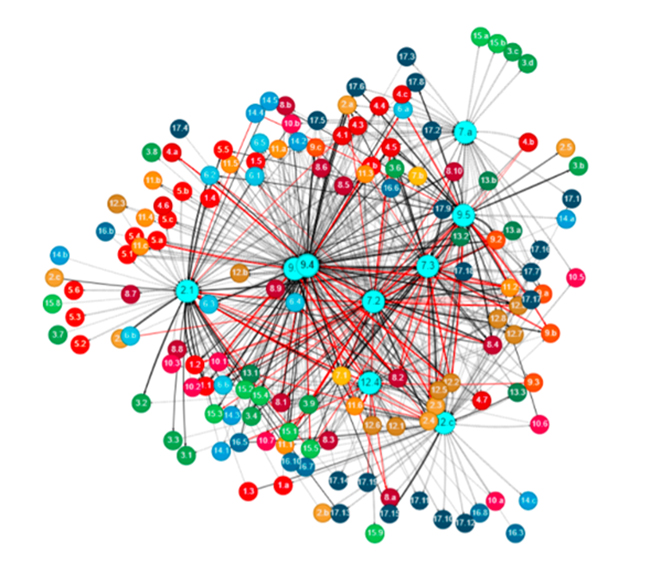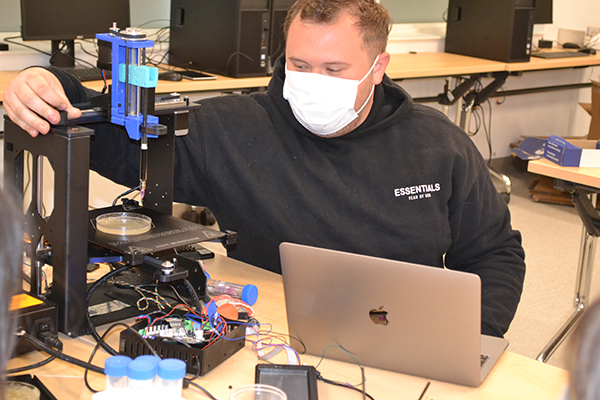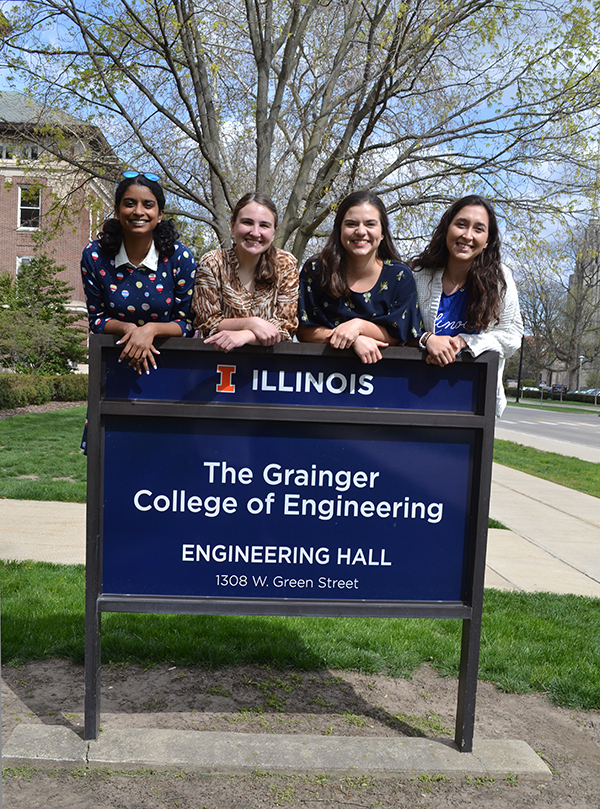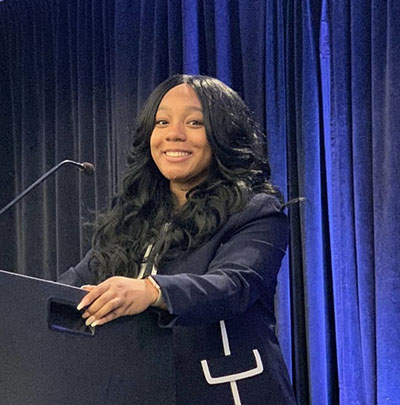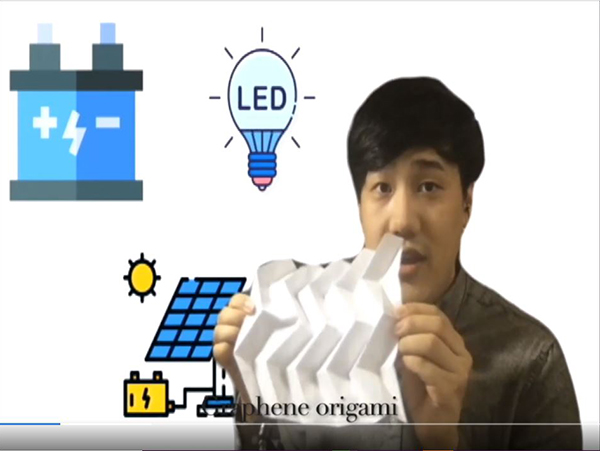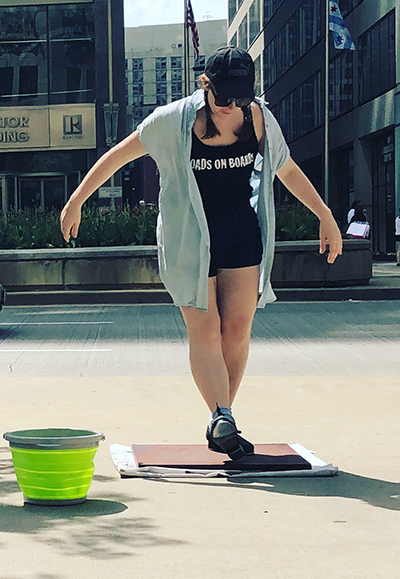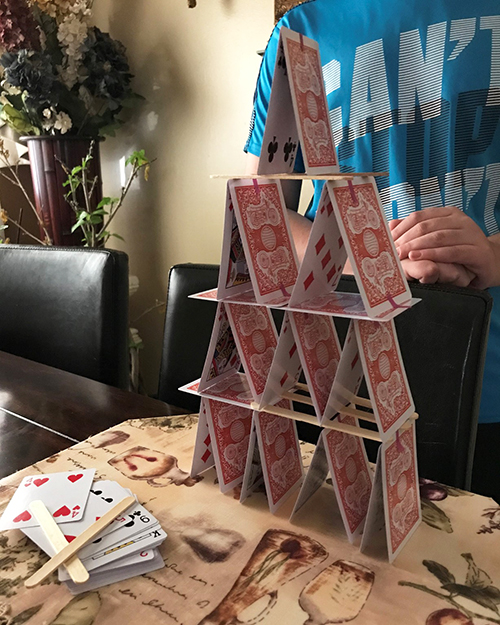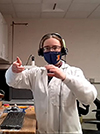2. Campus Projects to Reform Undergraduate and Graduate STEM Education
- CAREER: Enhanced Ferroelastic Toughening in Electroceramic Composites through Microstructural Coupling
- CAREER: Photoacoustic Imaging Probes to Study the Biology of Metal Ions
- CAREER: Multiscale Assembly of Conjugated Polymers at Dynamic Reconfigurable Interfaces
- CAREER: Spatiotemporal Avalanche Kinetics in Size-Dependent Crystal Plasticity
- CAREER: qBio+cBio=sBio; Identifying the role of cross-family signaling in angiogenesis
- CAREER: Transforming Electronic Devices Using Two-dimensional Materials and Ferroelectric Metal Oxides
- CAREER: Ultrafast Imaging and Spectroscopy of Cooperative Phenomena in Photomagnetic Nanomaterials
- CAREER:Water and Energy Sustainability in the Built Environment: Systems Science for the Blue City
- Collaborative Research: REU Site: Phenotypic plasticity research experience for community college students
- Critical Zone Observatory for Intensively Managed Landscapes (IML-CZO)
- CyberTraining: CIP: NCSA Internship Program for CI Professionals
- EAGER: Creating a STEM Evaluation Community of Practice to use Culturally Responsive Evaluation (CRE) in Broadening participation (BP) Programs and Projects
- Engineering Research Center for Power Optimization for Electro-Thermal Systems (POETS)
- Local Atomic-level Thermodynamic Probe for Nanoscience of 2D Membranes: Synthesis, NMR and Nanocalorimetry Study
- MRSEC: Illinois Materials Research Center
- A New Integrated Approach to Undergraduate Course Instruction
- PIRE: Integrated Computational Materials Engineering for Active Materials and Interfaces in Chemical Fuel Production
- Professional Science Master’s Program
- SFS-Capacity: Collaborative: Validation of Concept Assessment Tools for Cybersecurity
CAREER: Enhanced Ferroelastic Toughening in Electroceramic Composites through Microstructural Coupling
National Science Foundation Award #1654182
Jessica Krogstad
Materials Science and Engineering
Dates: June 1, 2017–May 31, 2022 (Estimated)
NON-TECHNICAL DESCRIPTION: Specific bonding configurations in ceramic materials enable unique functionalities in a wide range of advanced applications, including superconductive wires in supercomputers, precise gas sensors in automotive exhaust and tilt sensors in consumer electronics. However, these same atomic bonds are also the responsible for the characteristic brittle failure behavior of ceramics. This research is generating new perspectives on fundamental mechanical responses within a class of electrical ceramics necessary to enhance durability without sacrificing electrical performance. By coupling these insights with processing science, this project is accelerating the development of new electroceramic materials and material systems that may drastically expand the existing limits of performance and durability. Through a variety of education and outreach activities, this project also promotes engagement and retention of traditionally underrepresented students. These activities include a high school summer camp for young women interested in material science, integration of industrially relevant, computational tools into undergraduate courses, and expanded mentorship of female graduate students within the college of engineering.
TECHNICAL DETAILS: This project is experimentally establishing a fundamental relationship between otherwise stochastic morphological features and intrinsic toughening mechanism in order to systematically design highly durable, ferroelastic/ferroelectric functional composites. Ferroelastic switching is one of a limited number of intrinsic toughening mechanisms available for advanced ceramics, yet it is not fully utilized due to the largely uncharacterized relationship between localized morphological features, efficient activation of domain nucleation and motion, and resultant improvements in toughness. By bridging this gap using in situ microscopy and targeted micromechanical probes, this research is providing the foundation for accelerated physics-based design of more durable ceramic composite systems. Finally, the state of the art characterization and processing methods used in this project in combination with a data-driven integrated computational materials engineering perspective is enhancing the overall development of graduate students, preparing them for an ever more digitally-reliant materials science industry.
CAREER: Photoacoustic Imaging Probes to Study the Biology of Metal Ions
National Science Foundation Award #1752879
Jefferson Chan
Chemistry
Dates: July 1, 2018–June 30, 2023 (Estimated)
In this CAREER project, funded by the Chemical Structure, Dynamics & Mechanisms B Program of the Chemistry Division, Professor Jefferson Chan of the Department of Chemistry at the University of Illinois at Urbana-Champaign is developing a new class of imaging agents that convert light into ultrasound for the study metal ions in brain. Various disease (including a number of neurological disorders) are triggered if the concentrations of these metals in the body are changed. To understand the role of metals in the body under both normal and diseased conditions, an effective determination of their concentration is highly desirable. To achieve this goal, synthetic methods are used to develop chemicals that produce a different sound signals upon interacting with a metal. These sounds signals are used to non-invasively make 3D images of the brain (or other organs of interest). This project lies at the interface of organic chemistry, inorganic chemistry, and chemical biology and has impacts on human health, especially brain health. This research group is well-positioned to provide the highest level of education and training for all students including those underrepresented in science. The broader impacts this project focus on providing research opportunities to underrepresented minority students from five local community colleges. Undergraduate research experiences have been shown to have a notable effect on maintaining interest in STEM fields.
Owing to the diverse and important roles of metal ions in biology, nature has evolved sophisticated mechanisms to maintain metal ion homeostasis, especially in the brain. However, various disease states can emerge if this fine balance is perturbed leading to various neurological disorders. One imaging technique that can be used to non-invasively image the brain is photoacoustic imaging, which is a powerful new modality that utilizes light to produce soundwaves in tissue. The soundwaves can then be detected by transducers and converted into 3D images. Because sound scattering in tissue is low, this technology can be used to obtain resolution in the micron range at centimeter depths. The goal of this project is to elucidate the role of metal ions in the brain through the development of metal ion-specific imaging agents for photoacoustic imaging. Specifically, the proposed work in this application focuses on studying copper and calcium.
CAREER: Multiscale Assembly of Conjugated Polymers at Dynamic Reconfigurable Interfaces
National Science Foundation Award #1847828
Ying Diao
Chemical and Biomolecular Engineering
Dates: February 1, 2019–January 31, 2024 (Estimated)
Controlled assembly of electrically active materials has been a cornerstone to the electronics and energy industries. Recent years have witnessed a surge of semiconducting polymers which promise diverse applications from flexible electronics and transparent solar cells to imperceptible medical devices. However, it remains a central challenge to control the assembly of semiconducting polymers from the molecular to the device scales, which critically impact their device performance. This research addresses this challenge by developing dynamic, reconfigurable interfaces to direct the assembly of semiconducting polymers into highly ordered structures across length scales. The fundamental mechanism of surface-directed polymer assembly will be elucidated to guide the design of such interfaces. This approach, inspired by how biominerals (e.g. bone) are formed, is in contrast to conventional approaches wherein highly ordered, rigid surfaces are employed to direct assembly of electronic materials. This work may ultimately enable high-performance, low-cost printed electronic, energy and biomedical devices in forms that seamlessly interact with the human body and the living environment, which would have impact on the electronic, energy and healthcare industries. The fundamental insights from the planned work can be further extended to areas beyond semiconducting polymers, given the broad applicability of surface-directed assembly to the manufacturing of a wide range of functional materials.
The educational activities of the project are integrated with the research component, aiming at narrowing the gap between increasing demand in high-tech workforce and limited enrollment in STEM education in the US. Both polymer sciences and electronics have been at the center stage of high-tech industries. The overarching goal is to attract, nurture and retain STEM talents, particularly women, through public engagement, educational outreach, undergraduate and graduate education.
CAREER: Spatiotemporal Avalanche Kinetics in Size-Dependent Crystal Plasticity
National Science Foundation Award #1654065
Christoph Robert Eduard Maass
Materials Science and Engineering
Project Dates: June 1, 2017–May 31, 2022 (Estimated)
Non-Technical Abstract: When a metallic component is stressed to the extent that it plastically deforms, many defects operate to allow the permanent shape change. In crystalline metals, which means practically all technical alloys, these defects are called dislocations. Acting cooperatively, many dislocations can begin to move at the same time. This process can lead to abrupt plastic instabilities that deteriorate the structural stability of components and eventually trigger failure. One main problem with such collective, avalanche-like, processes is that they occur spontaneously, which means that they are hard to predict. In addition, these dislocation avalanches are confined to the nanometer scale and proceed extremely fast. As a result, very little is known about how they proceed in space and time. In this research effort, the PI and his students will unravel the precise dynamics of dislocation avalanches. We will not only track their spatiotemporal dynamics, but we will also define how they respond to changes in temperature. This will be done by unique micro-scale and temperature-dependent deformation experiments with extremely fast response dynamics. General statistical and physical models that are predicted to describe the avalanche behavior will be tested with the experimental data, and novel deformation models will be proposed. A successful completion of our research will lead to a better control of structural stability, and drive the development of mathematical models that can predict avalanches and therefore failure. Since avalanches occur in many other systems, such as earthquakes, disordered materials, or magnetism, the significance of the here-obtained results will extend well beyond plasticity of metals. In order to increase the nation's diversity and retention of underrepresented groups in STEM education, the PI will develop an educational program in the area of solid materials for the middle-school age-bracket, which he will present in outreach activities at schools, and also pioneer a new middle-school camp for girls. These interventions will be integrated with active learning techniques that the PI is currently implementing in undergraduate education.
Technical Abstract: This proposal will tackle a notoriously difficult problem that controls the structural integrity of metallic materials: How do local structural instabilities proceed in the space-time-temperature domain? These instabilities are caused by collective defect dynamics, called dislocation avalanches in crystals. The challenge lies in the spatial confinement and the short time scales of such processes. Using nanoseconds time resolution in combination with sub-nanometer displacement resolution during a temperature-dependent micro-scale straining experiment, the objective will be to trace dislocation avalanches in real time. This will be achieved by extending a commercially available nanoindenter with MHz data sampling capabilities, and to integrate the system into a cryostat. Four main thrusts compose the core of this research program: 1) non-linear modeling of the device-sample dynamics, 2) experimental validation of theoretically predicted scaling laws, 3) unraveling the transition from intermittent to smooth plastic flow, and 4) determining thermal activation parameters for dislocation avalanche dynamics. If successful, the hereby generated large experimental data set will be a unique basis for the development of predictive materials modeling, and may lead to a better control of the depinning transition and thus the strength of structural materials. Key of this project will be a unified experimental approach with highly time-resolved and temperature-dependent small-scale deformation experiments that can assess the velocity-profiles of dislocation avalanches, thereby scrutinizing recently proposed theories for avalanches near the depinning transition. The impact of these efforts is a first real-time assessment of a dynamic phase in crystal plasticity, which will improve our physical understanding of a process that ultimately dictates the mechanical stability of metals, or forming of small metallic components. The results will be relevant for bulk metals in general, and provide numerous important parameters for materials modeling and systems that undergo similar dynamic phase transitions, ranging from crystals to granular materials. Unravelling avalanche characteristics will furthermore provide a coarse-grained view on dislocation plasticity that can bridge between dislocation dynamics and constitutive crystal plasticity modeling, which may directly lead to more efficient multi-scale modeling frameworks.
CAREER: qBio+cBio=sBio; Identifying the role of cross-family signaling in angiogenesis
National Science Foundation Award #1653925
Princess U II Imoukhuede
Bioengineering
Project Dates: April 1, 2017–March 31, 2022 (Estimated)
A critical challenge in biomedical engineering is a need to control the process of blood vessel formation, also known as "angiogenesis." Controlling angiogenesis is important, because blood vessels supply the nutrients necessary for our organs and tissues to function properly. Efforts to control angiogenesis in cancer focus on starving and possibly killing the tumor by cutting off tumor blood supply, typically by looking at a single protein. This project proposes to overcome current limitations in this type of cancer therapy and meet the general challenge of controlling angiogenesis by tackling a more difficult, "big-data"-like problem: understanding how combinations of proteins control angiogenesis. This project will tackle the problem by: 1) experimentally determining important protein characteristics; 2) determining mathematical equations that describe the behaviors of these proteins; and 3) developing computer simulations that include both the experimental data and the mathematical equations to determine how the proteins work to cause angiogenesis. The education and outreach portion of this project will introduce sophomores to research and computer modeling in an introductory-level course in order to excite them about STEM. The activities will include mentoring of underrepresented students to increase their interest and persistence within STEM majors.
The directed control of angiogenesis remains a pressing need due to its involvement in the pathology of over 70 diseases. A promising approach for angiogenesis control involves going beyond the traditional emphasis on the vascular endothelial growth factor (VEGF)-VEGF receptor (VEGFR) axis towards a new focus: cross-axis signaling (protein binding across families). The objective in this project is to pioneer a shift towards understanding cross-axis angiogenic signaling via three aims grounded in quantitative biology (qBio), omputational biology (cBio), and integrative systems biology (sBio). Quantitative biology will be used to measure cross-axis binding and concentrations or relevant protein ligands, including through the development of new quantitative tools for multiplex measurement of receptor concentrations. Computational biology will be used to construct validated cross-axis models that will predict how adapter activation contributes to angiogenic hallmarks, cell proliferation, and migration. Systems biology will be used to predict the role of cross-axis signaling in angiogenesis by applying the qBio and cBio tools to angiogenesis in vitro. Ligand, receptor, and adapter concentrations will be measured, and the magnitude of cross-axis signaling will be predicted. These predictions will be validated by demonstrating control of vessel formation (inhibition and stimulation) in vitro. This research will be integrated with teaching by creating undergraduate research pathways via a core course. This will introduce systems biology to sophomore students who will develop computational models of ligand-receptor signaling in angiogenesis. Students will also be offered opportunities to continue their work within the PI's research laboratory. Additional mentoring will be provided to underrepresented students to support their persistence within STEM fields.
CAREER: Transforming Electronic Devices Using Two-dimensional Materials and Ferroelectric Metal Oxides
National Science Foundation Award #1653241
Wenjuan Zhu
Electrical and Computer Engineering
Project Dates: February 1, 2017–January 31, 2022 (Estimated)
Nontechnical description: Next generation information technology is driving the quest for energy efficient electronic devices to process unprecedented amounts of data in real time and in an energy- and cost-efficient manner. In this program, the principle investigator (PI) is planning to create and evaluate novel energy efficient electronic devices based on a new hybrid material platform consisting of two-dimensional (2D) materials (mono-/di-chalcogenides and graphene) and ferroelectric metal oxides (doped hafnium and zirconium oxides). The ferroelectric metal oxides provide programmable and non-volatile doping in 2D materials, while the atomically thin bodies in 2D materials enable strong electrostatic control over the channel by the ferroelectric metal oxides. Most previous research on 2D/ferroelectric hybrid materials has focused on traditional perovskite ferroelectric materials. This proposed work will undertake the first systematic study of 2D materials on newly discovered ferroelectric hafnium and zirconium oxides, which have the advantages of excellent scalability, high coercive field, and full compatibility with complementary metal oxide semiconductor (CMOS) technology. The PI's team will investigate the synthesis of this new hybrid material platform and create ultra-low power logic, memory, and analog devices based on these materials. The low power logic and memory devices based on these materials will be essential for mobile devices, medical implantable devices, wearable electronics, and large data centers. Analog classifiers based on these materials will enable high speed and low power signal processing and image recognition systems. 3D integration of these low power 2D ferroelectric devices with high speed silicon circuits will result in next-generation highly parallel and ultra-low power systems to support "Big Data" applications such as the Internet of Things and social media. The PI will integrate research and teaching by creating a new graduate/undergraduate course on 2D materials to train the next generation workforce in nanoelectronics. The PI will establish several outreach activities including a new "Little Einstein" science education program for elementary students to cultivate young minds at an early age to respect and embrace a career in science and technology. The PI will also establish a "Girls Go Tech" program for middle school girls to promote enrollment of female students in science and engineering programs.
Technical description: The objective of the proposed research is to establish the foundation for a new research direction: nanoelectronics based on 2D/ferroelectric metal oxides hybrid material platform. The PI's team will synthesize and characterize 2D/ferroelectric metal oxide stacks, seeking fundamental understanding of the ferroelectric phase transition in metal oxides with 2D materials as substrate/capping layers. The team will also utilize these materials to create energy efficient logic, memory, and analog devices. Specifically, the team will create and evaluate novel 2D ferroelectric tunneling field effect transistors (2D Fe-TFETs) to serve as ultra-low power logic; will investigate 2D ferroelectric hafnium oxide transistors (2D FHOT) to implement highly energy efficient, scalable, and durable ferroelectric random access memory (FRAM); will create embedded-gate graphene ferroelectric transistors (EGGFTs) to realize highly energy-efficient, extremely compact, and non-volatile analog classifiers. These devices will then be stacked layer-by-layer to realize 3D monolithic integration. This research will elucidate the device physics and evaluate the potential of these devices for future semiconductor technology. The resulting 3D integrated system will provide the hardware foundation for new circuit and architecture designs. This research is potentially transformative as it may unlock new lines of research and development in energy efficient devices, circuits, and architectures with a broad range of emerging applications from wearable electronics and implantable medical devices to data centers.
CAREER: Ultrafast Imaging and Spectroscopy of Cooperative Phenomena in Photomagnetic Nanomaterials
National Science Foundation Award #1751725
Renske van der Veen
Chemistry
Project Dates: March 1, 2018– February 28, 2023 (Estimated)
Improvements in digital technology rely heavily on reducing the size of electronic components. Over the past three decades, the basic building blocks of computer chips have shrunk to nanometer dimensions, or about 1000 times smaller than a human hair. In this size range, nanostructures exhibit new properties and behaviors that are not observed in their bulk counterparts. The appearance of new nanomaterials that change their shape when exposed to light have the potential to impact many different technologies. However, watching a single particle change its shape in the laboratory presents unique challenges, since the time needed to switch from one form to the other is exceedingly short and cannot be captured by the fastest camera. In this project funded by the Chemical Structure Dynamics and Mechanism (CSDM-A) program of the Chemistry Division, Professor Renske M. Van der Veen at the University of Illinois at Urbana-Champaign (UIUC) is building a microscope that uses very short bursts of electrons (less than a millionth of a millionth of a second) to watch as a single nanostructure change its shape in response to light. Professor Van der Veen and her students are using this microscope to gain fundamental insight into the cascade of switching events that occur in metal-organic nanomaterials after light excitation. The results from this work could impact technologies ranging from data storage to optical switches in telecommunication, and thus could have significant benefit to society. As part of this CARRER project, Professor Van der Veen is developing new educational activities that will train the next generation of scientists in this emerging experimental methodology.
Room temperature photoswitching is highly desired for realistic applications in functional devices. This project is advancing our understanding of first-order thermal phase transitions with cooperative hysteresis phenomena that occur around room temperature. Photoexcitation inside the hysteresis region may lead to efficient, "complete" switching of magnetic, dielectric and/or structural properties at the single-nanoparticle level. The project's focus is on iron- and iron-cobalt spin-crossover coordination polymers of different dimensionality, which undergo a rearrangement of electrons in their lowest d-orbitals upon light excitation. Transient absorption spectroscopy, ultrafast X-ray spectroscopy at synchrotron facilities, and a newly developed ultrafast electron microscope are used to investigate the interplay between structural and electronic degrees of freedom after photoexcitation. The project is also studying the mechanisms, time scales and efficiencies pertinent to cooperative photoswitching. The broader impacts of this work include STEM workforce enhancement through the development of a "3-Day Synchrotron Boot Camp" for undergraduate and graduate students, as well as research-integrated lectures and demonstration modules for female and underprivileged middle-school students.
CAREER:Water and Energy Sustainability in the Built Environment: Systems Science for the Blue City
National Science Foundation Award #1847404
Ashlynn Stillwell
Civil and Environmental Engineering
Project Dates: September 1, 2019–August 31, 2024 (Estimated)
Nontechnical description: This career project is targeted to advance water and energy sustainability in the built environment through integrated research and education at the frontier of systems science. Water and energy are two vital and highly interconnected resources. In the energy-water nexus, innovations in infrastructure and policy can transform cities towards sustainability goals. Moving beyond the traditional sustainability paradigm of the "green city" focused primarily on energy, this project aims to create solutions for water sustainability, termed here the "blue city". Advancing both water and energy infrastructure systems can be synergistic: the "blue city" is to be explored as a component of the "green city". To advance sustainability in the built environment, the project plan considers the utility, city, and residential scales to capture the range in different systems science approaches, from top-down and bottom-up perspectives, including the integration between the two approaches.
The integrated research (R) and education (E) objectives are: R1) Characterize the energy sustainability of the water sector in urban areas, using operational data from U.S. cities; R2) Deploy smart water metering systems in residential homes to disaggregate and characterize end uses; R3) Integrate water data with energy data to predict city-scale outcomes from efficiency programs and investments; E1) Develop, implement, and evaluate in-class, online, and informal coursework integrating concepts of water and energy technologies and policies; E2) Organize and implement STEM programming events on water and electricity topics in collaboration with the Girl Scouts of Central Illinois. Outcomes from the research and education objectives are anticipated to generate new, previously unquantified knowledge of the energy-water nexus. At the utility scale, systems science advancements include collecting,organizing, curating, and openly publishing a comprehensive database of treated flow and energy consumption (and recovery, where applicable) at U.S. water and wastewater utilities, and benchmarking direct and indirect water and energy consumption from an urban metabolism perspective. At the residential household scale, innovative expected results include creating characteristic models of residential water demand patterns from a previously unstudied temperate-humid climate, using Chicago as a testbed. Integrating the utility and household scales to the city scale, advancements include predicting resource efficiency outcomes from statistical models correlating electricity and water consumption. Additional contributions include citizen science training and data collection with Girl Scouts and innovative pedagogical approaches to water and energy sustainability curriculum, building on findings from research analyses and producing data to inform research approaches.
Critical Zone Observatory for Intensively Managed Landscapes (IML-CZO)
National Science Foundation
Award #1331906
Praveen Kumar,
Elmer Bettis III, Timothy Filley, Thanos Papanicolaou, Alison Anders
Civil and Environmental Engineering Geology
Project Dates: December 1, 2013–November 30, 2021 (Estimated)
Intensively managed landscapes, regions of significant land use change, serve as a cradle for economic prosperity. However, the intensity of change is responsible for unintended deterioration of our land and water environments. By understanding present day dynamics in the context of long-term co-evolution of the landscape, soil and biota, IML-CZO aims to support the assessment of short- and long-term resilience of the crucial ecological, hydrological and climatic services. These include freshwater quality and quantity, provision for food, fiber and (bio)fuel, nutrient transformations, and terrestrial carbon storage. The goals of this project are to quantify the fluxes and transformations, as well as interactions, thresholds, and dynamic feedbacks of water, nutrients, and sediment in IMLs, and to characterize how rapid land use changes have altered the vulnerability and resilience of these systems. An observational network of two sites in Illinois (3,690-km2 Upper Sangamon River Basin) and Iowa (270-km2 Clear Creek Watershed), and a partner site in Minnesota (44,000-km2 Minnesota River Basin), which together capture a range of geological diversity of the low relief glaciated and tile-drained landscape in the Midwest, will drive the scientific and technological advances. The guiding hypothesis for the scientific effort is that through human modification, the critical zone of IMLs has passed a tipping point (or threshold) and has changed from being a transformer of material flux, with high nutrient, water, and sediment storage, to being a transporter. This change threatens the resilience of the landscape to accommodate future impacts associated with ongoing human activity, including climate change and bioenergy crop production. Further, it increases the vulnerability of IMLs by compromising the sustainability of key critical-zone services on which ecological systems and human populations depend. Understanding and quantifying shifts in the response of the critical zone to human development remains a challenge, and current assessments are at best qualitative. IML-CZO research will identify threats to resilience of the critical zone, and will also inform management strategies aimed at reducing the vulnerability of the system to human activities that threaten sustainability. We will develop methods and knowledgebase that are broadly applicable across the Midwest and similar low-gradient landscapes worldwide.
The project will provide leadership in developing the next generation of work force and informing sustainable management strategies. The IML-CZO will be a launch pad for several new educational and outreach initiatives, and it will be an integral resource to connect and partner with existing organizations. It will draw on and add to several resources and programs available throughout the region. The CZO will provide a testbed for student-led sensing and data collection initiatives, and is expected to stimulate new research ideas and further advance the sensors and measurements curriculum. The CZO will also work to bring together collaborations with National Great Rivers Research and Education Center, IOWATER, Minnesota and Illinois RiverWatch Volunteer programs to enlist "citizen scientist" (age 10 - 70) in the work of the CZO. IML-CZO will also serve as a training ground for several undergraduate and graduate students, and post-doctoral research associates by engaging them in interdisciplinary research.
CyberTraining: CIP: NCSA Internship Program for CI Professionals
National Science Foundation
Award #1730519
Daniel Lapine, Volodymyr Kindratenko
National Center for Supercomputing Applications, Electrical and Computer Engineering
Project Dates: August 1, 2017–July 31, 2021 (Estimated)
This project is NCSA's pilot internship program for cyberinfrastructure (CI) professionals, designed to address the shortage of a workforce with the specialized skills needed to support advanced CI operations. The program both provides internship opportunities for individuals who want to gain first-hand experience in the CI operations of a supercomputing center, and develops and refines instructional materials to serve as templates that are openly distributed for use by other centers and institutions to train CI professionals for scalability. Program interns work directly with a group of engineers in one of the areas of CI focus to gain hands-on experience in the deployment and operation of cutting-edge high-performance computing (HPC) infrastructure at a leading HPC center. Graduates of this internship program will enter a workforce that will develop, deploy, manage and support advanced CI at other universities, centers, and industry to meet the needs of the national computational science research community. By doing so, the project serves the national interest by promoting the progress of science and advancing the national prosperity and welfare.
Managing modern CI that supports scientific research is a challenging task which requires deep and broad knowledge and experience to plan, acquire, deploy, and operate complex HPC resources. This project plans to help prepare the next generation of system engineers and administrators knowledgeable about computer architecture, storage technology, interconnect, operating system, cluster software stack, user management, job management, resources monitoring, networking, and security, as well as best practices in the field. The goals for this internship program include expanding the talent pool by attracting and supporting professional development of minority and underrepresented groups in the field of CI, providing motivated individuals the opportunity to obtain real-world CI operational experience through a short, full-time program in an area already supported by NSF for its programmatic needs, and developing training materials and identifying best practices that will be contributed back to the community to be used stand-alone or in combination with an internship program to train next-generation CI professionals.
EAGER: Creating a STEM Evaluation Community of Practice to use Culturally Responsive Evaluation (CRE) in Broadening participation (BP) Programs and Projects
National Science Foundation
Award #1849102
Rodney Hopson
Education
Project Dates: September 1, 2018–August 31, 2021 (Estimated)
Purpose. The purpose of this project is to conduct exploratory research to gauge the interdisciplinary and transformative potential of using culturally responsive evaluation (CRE) methods to inform the general development of shared accountability mechanisms for broadening participation in the STEM workforce. In addition, the research will add to the evaluation knowledge/practice base, specifically on the efficacy of internship experiences in the creation of more effective recruitment strategies, education/training, and career pathways for evaluation professionals of color. This project builds on a need expressed by the American Evaluation Association?s national competitive pre-doctoral Graduate Education Diversity Internship (GEDI) program to introduce and advance the utilization of CRE in Federal STEM evaluation.
Community of Practice. This project will create a community of practice that places two GEDI interns annually at the National Science Foundation to engage in both the application of CRE to ongoing contracted Federal STEM education and research evaluation projects, but also to contribute to research conducted by the Center for Culturally Responsive Evaluation and Assessment (CREA) at the University of Illinois- Champaign-Urbana on the use of CRE in STEM education and research evaluation based on their experience.
Research Activities. The research will discover the factors that drive the successful development of sustainable, intergenerational evaluation pathways to promote broadening participation in STEM evaluation. Data collection methods include literature review, participant observation, secondary analysis of administrative records and other data, surveys, and interviews. These data will be used to strengthen the existing GEDI theory of change framework and curricula by infusing findings and lessons learned from the internship experience about the use of CRE and broadening participation in STEM evaluation.
Dissemination. A symposium held during the second year of the project will convene experts in CRE, STEM BP, and evaluation to review the research findings and derive implications for to advancing the science and practice of evaluating investments in broadening participation across the STEM research workforce. Dissemination activities and products such as journal articles, conference presentations, and professional development workshops are planned for both years.
Engineering Research Center for Power Optimization for Electro-Thermal Systems (POETS)
National Science Foundation Award #1449548
Andrew Alleyne,
Kenneth Goodson,
Sonya Teresa Smith,
Homer Mantooth,
Paul Braun
Mechanical Science and Engineering
Project Dates: August 1, 2015–July 31, 2025 (Estimated)
Nearly all modern electronic systems are hitting a power density wall where further improvements in power density pose significant challenges. The NSF Engineering Research Center for Power Optimization for Electro-Thermal Systems (POETS), aims to enhance or increase the electric power density available in tightly constrained mobile environments by changing the design. The management of high-density electrical and thermal power flows is a safety-critical societal need as recent electrical vehicles and aircraft battery fires illustrate. Engineering education conducted in silos limits systems-level approaches to design and operation. POETS will create the human capital that is explicitly trained to think, communicate, and innovate across the boundaries of technical disciplines. The Engineering Research Center (ERC) will institute curricular reform to train across disciplines using a systems perspective. It will develop pedagogical tools that allow greater stems-level understanding and disseminate these throughout the undergraduate curriculum. POETS will target undergraduate curriculum modifications aimed at early retention and couple it with undergraduate research and K-12 teacher activities. POETS' research will directly benefit its industry stakeholders comprised of power electronics Original Equipment Manufacturers (OEM) and Small to Medium sized businesses in the OEM supply chain. An Industry/Practitioner Advisory Board will help direct efforts towards ready recipients of POETS research developments. POETS will harness the outputs of the ecosystem and drive research across the "valley of death" into commercialization.
POETS uses system level analysis tools to identify barriers to increased power density. Design tools will be used to create optimal system-level and subsystem-level designs. Novel algorithm tools will address the multi-physics nature of the integrated electro-thermal problem via structural optimization. Once barriers are identified, POETS will cultivate enabling technologies to overcome them. The operation of these systems necessitates development of heterogeneous decision tools that exploit multiple time scale hierarchies and are not suitable for real-time use. Implementation of these management approaches requires new 3D power electronics architectures that surpass current 2D designs. The thermal management will be tightly coupled with new 3D electronic systems designs using topology optimization for power electronics, storage, etc. The new designs will tightly interweave elements such as solid state thermal switches and modular multi-length scale elements; i.e. spreaders, storage units, phase change and mass flow system interacting with convection units. Fundamental research advances will support development of the 3D component technologies. New materials systems will be developed by manipulating nanostructures to provide tunable directionality for in plane and out-of-plane thermal power flows. These will be coupled with micro- and nano-scale thermal routing based on new conduction/convection systems. Buffers made from phase change material will be integrated into these systems to augment classes of autonomic materials with directed power flow actuation. Novel tested systems will integrate the system knowledge enabling technologies and fundamental breakthrough into modular demonstrations.
MRSEC: Illinois Materials Research Center
National Science Foundation Award #1720633
Nadya Mason,
Catherine Murphy,
David Cahill,
N Aluru,
Brian DeMarco
Physics
Project Dates: September 1, 2017–August 31, 2023 (Estimated)
The mission of the Illinois Materials Research Science and Engineering Center is to perform fundamental, innovative materials research that has applications to societal needs, while supporting interdisciplinary education and training of students in materials design, understanding, and application. The scientific research comprises two highly interdisciplinary groups. The first group aims to revolutionize our ability to store and process information, via a new type of control of magnetism in materials known as anti-ferromagnets. In particular, the research focuses on controlling the behavior of these unconventional materials, which overcome the fundamental size and switching time limits of conventional magnetic memory storage such as currently used in computer disk drives. The second research group focuses on designing electronic materials that can withstand large deformations, such as bending and crumpling. Results of this research will enable many new applications, including wearable electronics and devices integrated with biological tissues, which require electronic materials that can be reversibly bent without degrading. The research activities of the Center are tightly integrated with education, outreach, and collaborative activities. Activities focused on science communication are designed to create a cadre of effective science communicators and enable the public to better assess and appreciate scientific results. Workshops and internships foster enhanced connections between academia, industry, and national labs. Advanced training for a diverse group of undergraduates, graduate students, and postdoctoral researchers produces well-trained scientists who can push the boundaries of materials research in industry and academia, and increases the pipeline for the future scientific workforce.
A New Integrated Approach to Undergraduate Course Instruction
Howard Hughes Medical Institute Award
Yi Lu
Chemistry
Dr. Lu proposes developing a new integrated, inquiry-based course involving all levels of undergraduate students, from freshmen to seniors, with the theme of the role of chemistry in life and society. The course will help recruit, motivate, and retain minority students as science majors. The course will be a single class that spans the four-year undergraduate education; students may take up to one semester per year. First-time students will attend lectures as well as presentations by other students. They will also choose an open-ended topic to research. The second time students take the course, they will give a literature seminar on their chosen topic. The third time, they will give a proposal seminar on how they will investigate their topic and resolve problems. The fourth time, they will give a seminar to report the results of their investigations.
Students at all levels who have similar topics will be put into groups to work together; seniors will be expected to act as mentors to the more junior students. In addition, each group will be assigned a more senior mentor, such as the instructor, a teaching fellow, a graduate teaching assistant, or a research assistant. The goal of the course is to interest students who may not otherwise choose science courses or a science major. In addition, to recruit minority students from other universities, the course will be offered in the summers and fellowships will be provided to defer expenses.
PIRE: Integrated Computational Materials Engineering for Active Materials and Interfaces in Chemical Fuel Production
National Science Foundation
Award #1659702
Narayana R Aluru
Mechanical Science and Engineering
Project Dates: October 1, 2015-September 30, 2021 (Estimated)
A major challenge before renewable energy technologies can be implemented at global scales is to find a way to store the energy produced by intermittent sources such as the wind and the sun. Existing technologies fail to meet the energy storage demand and novel solutions are needed. An attractive technology that can potentially meet the growing demand is solid oxide electrolysis, where electrical energy produced by renewables is converted into chemical energy and stored for later use. Solid oxide electrolysis cells (SOECs) are complex, integrated material systems that use electrical energy as input to catalyze chemical reactions that produce chemical fuels. However, at present SOECs last for only a few hundreds of hours primarily because of degradation and failure at interfaces and in the bulk. In this project, an international partnership, comprising the University of Illinois at Urbana-Champaign, University of California at Berkeley, and Northwestern University in the U.S. and Kyushu University in Japan, has been formed to demonstrate an integrated approach to enabling SOEC technology. This PIRE award uniquely combines the world-class experimental resources and expertise at KU with the complimentary experimental expertise at UCB and NU, and the world-class computational facilities and expertise at Illinois to solve the energy storage grand challenge. This project will have a lasting institutional impact, including long-term synergistic collaborations between U.S. and Japan; extensive research and training for students and early career investigators in cutting-edge interdisciplinary topics in an international collaborative context, and outreach to K-12 teachers, science museums and summer camps. The integrated PIRE project will advance research in a number of disciplinary areas, including materials, physics, chemistry, engineering and computational science, and create a global citizenry to power the future.
This project will develop an integrated computational and experimental approach to design efficient, reliable, low temperature, extended lifetime SOECs. The novel aspects of the proposal are: 1) Computational and experimental design of novel proton and oxygen-ion conducting electrolytes. This effort will involve the design and development of proton conducting oxides with sufficient stability, operating temperature of 600?aC or lower, higher energy efficiencies at acceptable current density and high proton conductivity. 2) Computational and experimental design of novel electrodes focusing on chemistry and microstructure. This effort will involve the design and development of high-activity electrodes based on microstructure optimization and materials activity. In addition, a detailed understanding of new electrodes such as the Ruddlesden-Popper structures and ordered perovskites will be developed. 3) Computational models and experimental validation of degradation modes in SOECs. This will involve the development of a comprehensive understanding of degradation modes at electrolyte/electrode interfaces focusing on relationships between temperature and applied potential to cation segregation, bubble formation, delamination and fracture. The computational effort is strongly tied with the experimental effort and all computational predictions will be validated with experiments. Undergraduate, graduate and postdoctoral researchers will be engaged in a rich US-Japan exchange program and their PIRE research and education experience will prepare them for challenging positions in the global workplace. Outreach activities will focus on K-12 engagement, teacher training, disseminating knowledge via science museums, and summer camps.
This award is cofunded by the Division of Advanced Cyberinfrastructure, Directorate for Computer and Information Science and Engineering.
Professional Science Masters Program
Sloan Foundation
Bryan White, Hans Blaschek, Nicki Engeseth
Agricultural, Consumer and Economic Sciences
The Illinois Professional Science Master's (PSM) is a non-thesis graduate program that offers an MS degree, allowing students to pursue advanced training in science or mathematics while simultaneously learning critical business skills through an integration of four key curriculum components: science or mathematics courses, "plus" business courses, industry seminar, and internship. Program options include Agricultural Production, Bioenergy, or Food Science and Human Nutrition.
SFS-Capacity: Collaborative: Validation of Concept Assessment Tools for Cybersecurity
National Science Foundation
Award #1820531
Geoffrey Herman
Computer Science
Project Dates: September 1, 2018-August 31, 2021 (Estimated)
The project at the University of Maryland, Baltimore County (UMBC) aims to evaluate two cybersecurity educational assessment tools: the Cybersecurity Concept Inventory (CCI) and the Cybersecurity Curriculum Assessment (CCA). The CCI assesses the quality of instruction of any first course in cybersecurity; the CCA assesses how well a college curriculum prepares graduates for a career in cybersecurity. The evaluation will consist of student interviews, expert reviews, and statistical analyses to examine the efficacy of these tools. In addition, the project will provide initial insights into the efficacy of educational approaches by comparing student performance relative to their instructors? teaching practices. At present, there is not a rigorous, research-based method for measuring the quality of cybersecurity instruction. Validated assessment tools such as the ones in development at UMBC are essential so that educators have trusted methods for discerning whether efforts to improve student preparation are successful. This validation study will complete an essential part of the broader Cybersecurity Assessment Tools project, which will provide rigorous, evidence-based instruments for assessing and evaluating educational practices.
To develop evidence for the validity of the CCI?s and CCA?s measurement of student conceptual understanding of cybersecurity, the project will complete six tasks for each assessment tool: (1) conduct at least thirty cognitive interviews of students thinking aloud while answering the draft questions, and use results to improve the validity of the questions; (2) collect and use feedback on the draft questions from at least twenty experts in cybersecurity or cybersecurity education; (3) administer the draft tool to at least 200 students and use psychometric methods of analysis on the results; (4) revise the draft questions in light of tasks 1-3; (5) administer the revised tool to at least 1,000 students and use psychometric analysis on the results; and (6) hold workshops at four cybersecurity education meetings to promote awareness of, and to seek additional feedback on the tools. By following well-established rigorous methods for developing CCIs, this project will help the cybersecurity educational community to develop and improve curricula and instructional methods and materials.
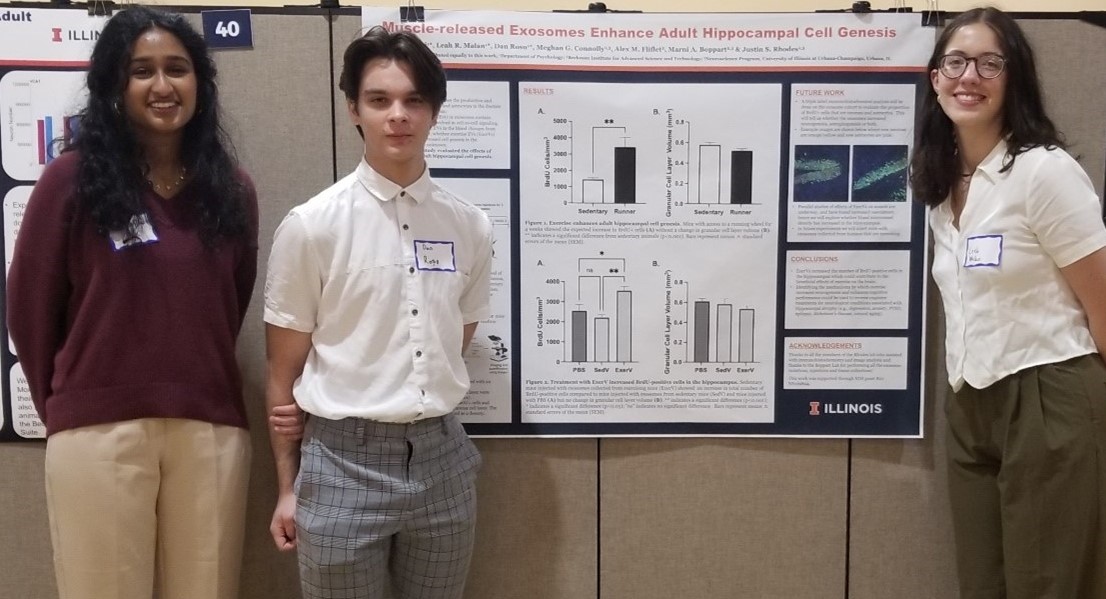
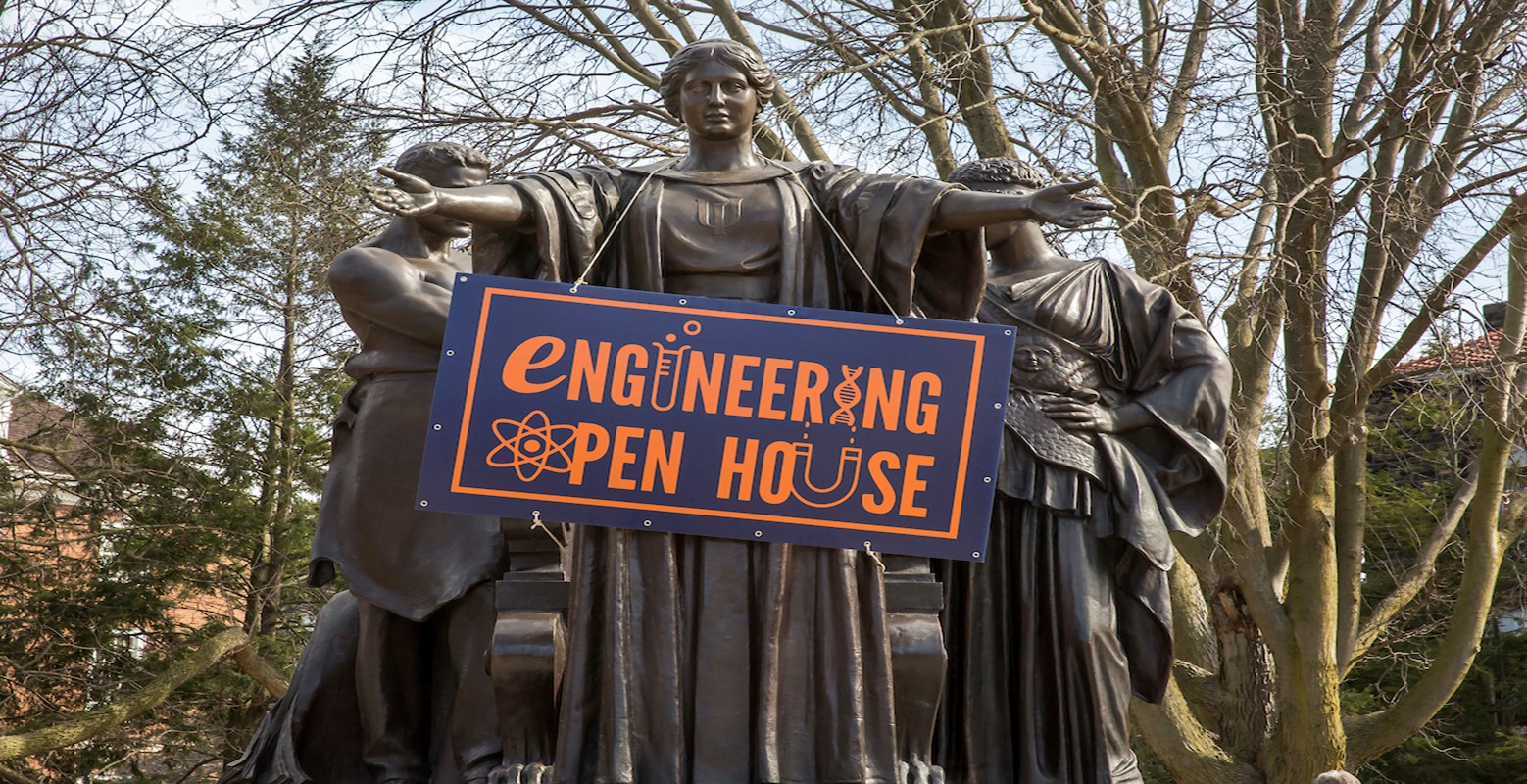
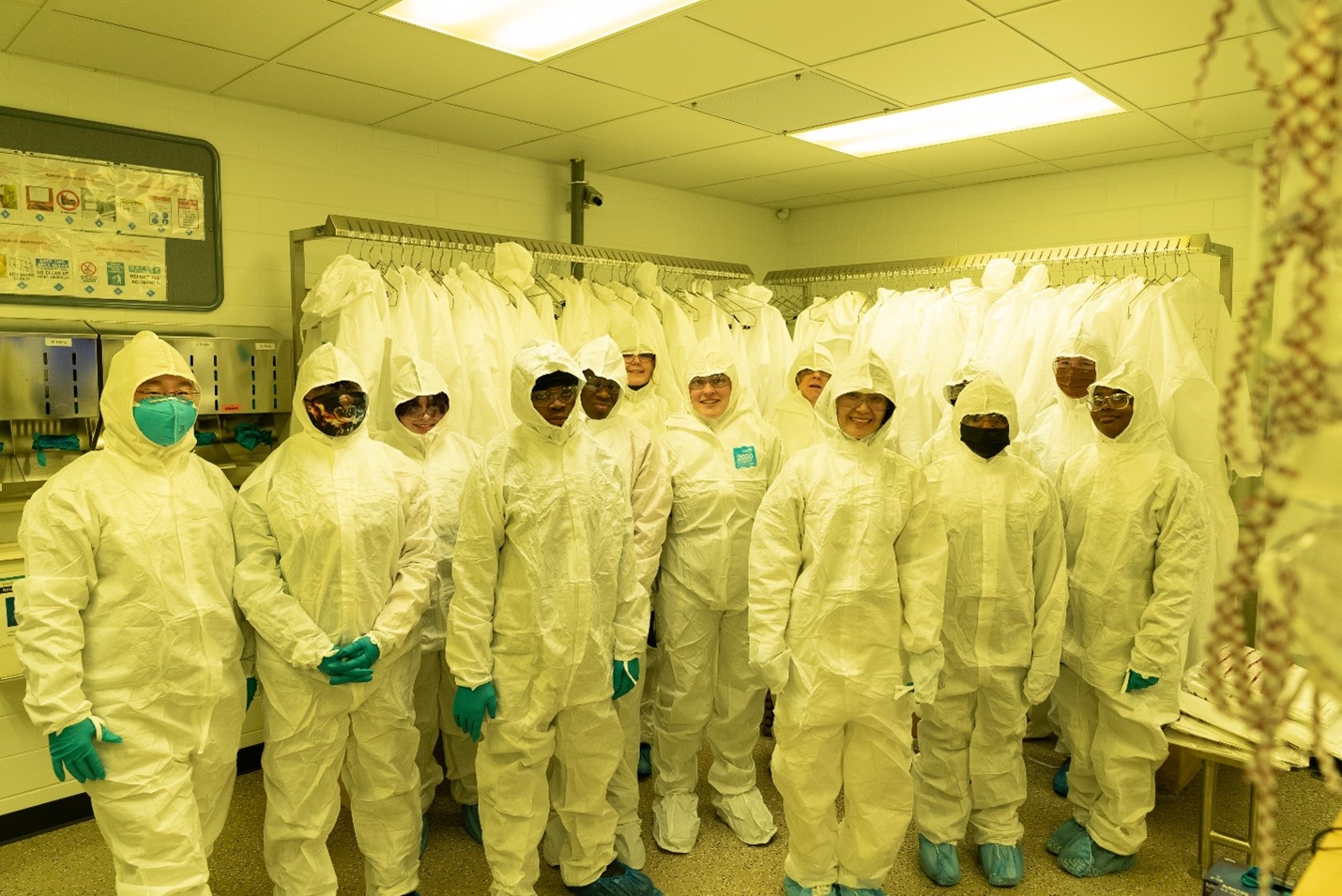
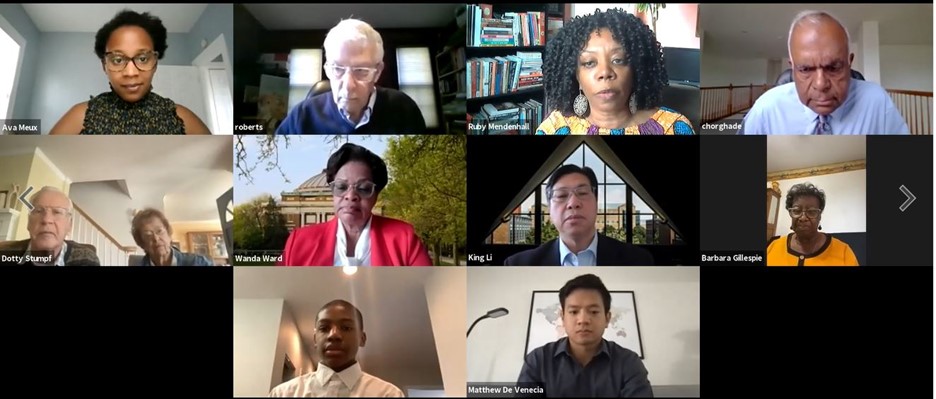
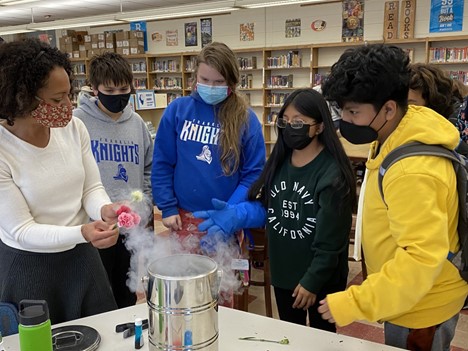
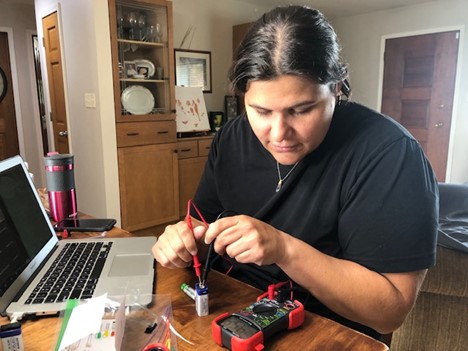
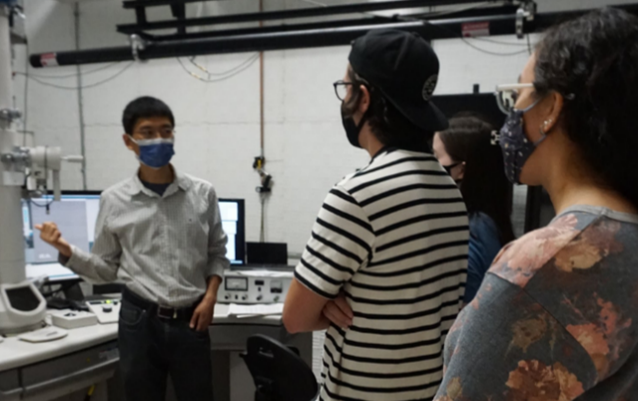
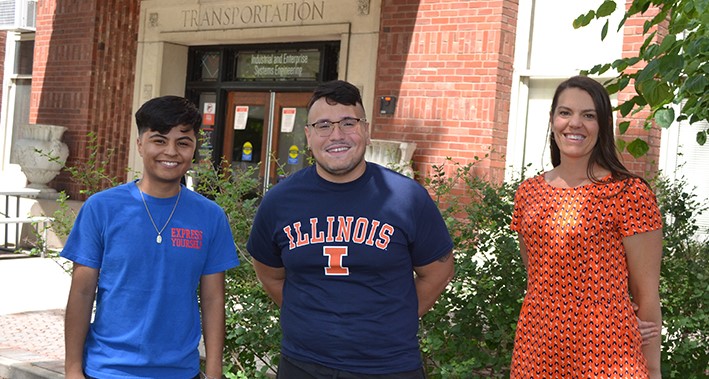


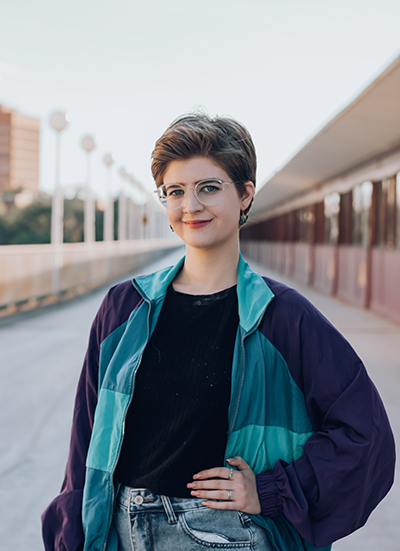
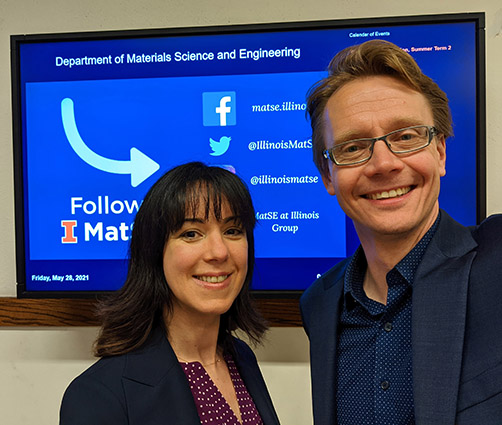
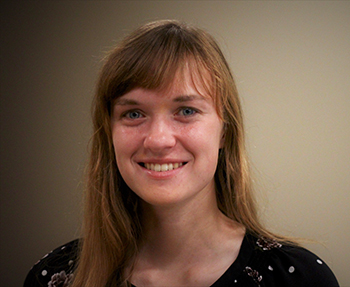
.jpg)

